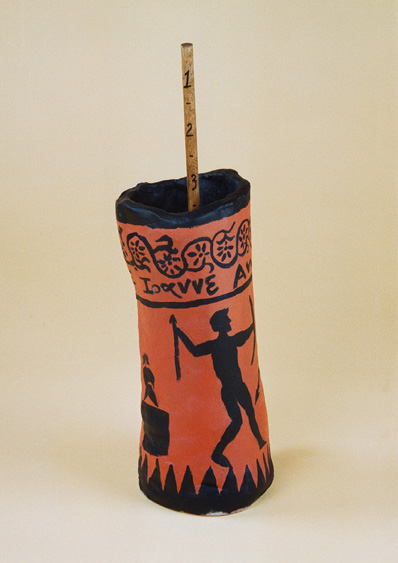
by Joanne Chang, '99 and Anna Soellner, '98

It is believed that the advance news of the capture of Troy by the Greek commander Agamemnon was communicated through beacons. Though there really is no evidence that proves that beacons were in fact used for communication during the time of the Trojan War, Aeschylus's play suggests that this form of communication was used during his time (525-455 BCE). These beacons, which were simple prearranged signals, served as precursors to the telegraph. It was the Greek military scientist named Aeneas Tacticus who developed this ingenious method of communicating messages using the simplest torch signals in the 4th century BCE.
The way in which this system works is that two armies who wish to communicate with each other would have to create two sets of identical equipment. Each army would have the same earthenware or clay jar with a hole of exactly the same size drilled on the bottom side of the jar. In addition, each army would have a wooden (or cork) float with a rod attached to it. The diameter of the float should be slightly smaller than that of the clay jar. The rod would have clearly marked section with numbers partitioning each section. Each number would represent a military message, like the "corn has arrived" or "don't let the big wooden horse in". The messages on the rod would have to be identical and both armies would have to agree on the most useful messages.
The earthenware jar would be filled with water and the hole at the bottom would be plugged using a cork piece allowing the wooden piece to float inside of the jar. When army A wanted to communicate to army B, a signalman would wave a torch (like in Agamemnon) until it is spotted by signalman B who would then, in return, respond by waving his torch. When contact in established each signalman would unplug his jar simultaneously letting the water drain out. The cork float would then slowly sink to the bottom of the jar while a myriad of numbers inscribed on the rod sink. Signalman A would then raise his torch when the appropriate message that he wished to communicate reaches the eye level of both signalman. Ideally, because the equipment should be identical, the floats would sink at the same rate and thus communicate the same message at the same moment. Though this method is a bit inefficient, it would be virtually impossible for anyone outside of these two armies to crack the code.